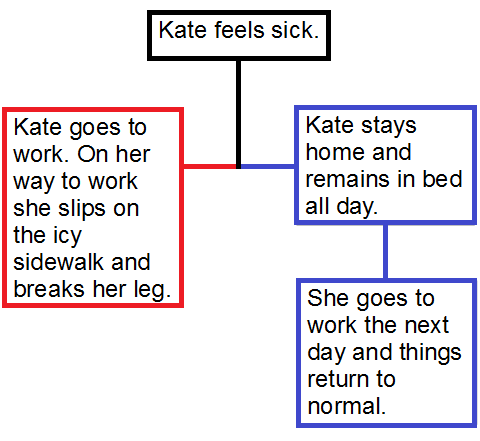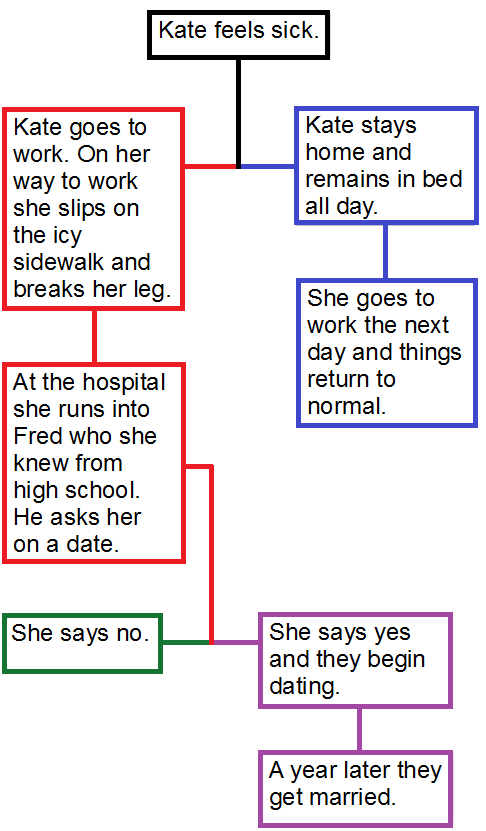About me and why I created this physics website.
Quantum Physics - For Kids

Quantum physics is a branch of physics that deals with things that are very, very small, and which are on the level of the atom and smaller. Many of the phenomenon that occur at this very tiny level are highly non-intuitive and make absolutely no sense, even to the smartest of scientists. Quite simply, there are things that happen on the level of the atom which sound like they belong in science fiction, and not in the real world. But experiments have repeatedly proven that these things do actually happen. One such quantum "weirdness" which I'm going to talk about the most, is the Many-Worlds theory which states that there may be different parallel universes in which there are outcomes different from ours. So there may be a universe were the dinosaurs are still around, or another universe where JFK was not killed. Or there may be other universes where you exist but are a significantly different person. The number of possibilities is infinite. Sounds unbelievable doesn't it? But some well-respected physicists believe in it. As it turns out, the Many-Worlds theory comes about as a result of thinking very deeply about what happens at the very tiny level of the quantum world. So it wasn't just "made up" because it sounds cool.
Reality at the quantum level is not fixed and determinate, the way we experience things to be. Instead, reality at the quantum level has a "fuzzy" and random quality to it, and this is essentially where the Many-Worlds theory comes from. The theory starts with this one basic fact which physicists have known about for many years now: Tiny quantum particles, such as atoms, electrons, and photons can exist in more than one place at the same time through a phenomenon known as quantum superposition. In fact, they can exist in all their possible locations at the same time! And they do this up until the point at which a measuring device makes a measurement on them (i.e. observe them). Once this happens their location becomes localized and they are found in just one place, which is precisely what we expect intuitively! For example, let's imagine that I am a quantum particle and you want to find where I am. Now let's say there is a 70% chance that I am at my house, a 20% chance that I am at my friend's house, and a 10% chance that I am at the mall. According to quantum physics, before you go looking for me at one of these places I will be in all of these places at the same time. But at the instant you look for me in any of these places I will suddenly be at only one of these places. So if you look for me at, say, the mall I will, at that instant, be at my house, or at my friend's house, or at the mall. And as mentioned, the probability of you finding me at my house is 70%, the probability of you finding me at my friend's house is 20%, and the probability of you finding me at the mall is 10%. The simple act of you looking for me is a form of observation and this is what causes me to be at only one of these places. Sounds crazy doesn't it?
The Many-Worlds theory comes about as a result of the discovery that quantum particles (such as atoms, electrons, and photons) can exist in all their possible locations at the same time, and then imagining that if the different locations of these particles are linked to different macro-size events (events that are on our size level), then these different macro-size events must also exist at the same time. So it's only when the outcome of a quantum event is linked to macro-size events that we can say there are simultaneous parallel universes corresponding to those different quantum outcomes. So let's say that the asteroid that killed the dinosaurs was linked to some quantum event. Then, according to the Many-Worlds theory, there is another parallel universe (inaccessible to us) in which an asteroid did not strike the earth and kill the dinosaurs. And the course of history from that point forward is different from what we know. As a result we might not exist in that particular universe. According to the theory, all these parallel universes are equally real as ours but are inaccessible to each other. They are as separate from each other as are different sheets of paper.
The Many-Worlds theory comes from recognizing that different outcomes simultaneously exist at the quantum level. And if the quantum level can, through a cascade of connected events, affect the macro-sized world where we exist, then there will be different universes corresponding to these different quantum level outcomes. The act of observation (or interaction) by us forces us to be in a universe corresponding to only one of these possible outcomes. The probability of a particular outcome, and a particular universe, depends on the nature of the outcome and how likely, or unlikely it is. The Many-Worlds theory is a stretch of imagination in that it states that different quantum outcomes correspond to different (and separate) universes rather than there just being different possible outcomes existing in our world simultaneously until an observation is made, at which point we see only one of those possible outcomes.
As a fun exercise I drew a flow chart illustrating the idea behind parallel universes. Let's imagine a situation where we have someone, let's call her Kate, and she feels sick. And let's say that for the sake of argument there is a quantum event in her brain that either makes her decide to go to work or stay home. At the instant she makes the decision the universe splits into two to accommodate each possible outcome (her staying home and her going to work). The figure below shows these two parallel universes in the colors red and blue.

The red outcome shows that, as a continuation of her decision to go to work, Kate has fallen and broken her leg. As a result she ends up in the hospital. Now imagine further that at the hospital she runs into an old friend Fred which she knew from high school. Fred asks her out on a date, and due to another quantum event in her brain she either says yes or no. Once again, when she makes the decision, the universe splits in two to accommodate each outcome. This is shown in the continuation of the flow chart, shown below. The color green represents her saying no and the color purple represents her saying yes.

This shows you just how many possibilities can exist. The number of branching points leading to different outcomes is practically infinite.
No doubt this is hard to wrap your mind around. But no one ever said that science had to make sense. In fact many things in science don't make intuitive sense at all, even to the smartest people. So instead, people learn how to analyze these things in terms of physical laws and mathematical equations.
Teleportation
The last bit of quantum weirdness I want to talk about is teleportation, like the kind you've seen in Star Trek. Teleportation has currently been done for quantum particles, and in theory it is also possible to do it for life-size objects such as humans. The ability to teleport comes about as a result of this really weird thing in quantum physics known as quantum entanglement. I won't get into the details of it here. It's just too abstract and hard to understand. So instead I'll talk about the details of how teleportation would work.
Apparently, to teleport life-size objects you have to destroy the original teleportee. So imagine that a teleportee, let's call him Bob, is going to be teleported. The teleportation process requires that the (original) Bob entering the teleporter be destroyed. Only by doing this can Bob emerge on the destination end. Some suggest that the Bob that shows up on the destination end is only a copy, an exact copy, but a copy nonetheless. But since Bob at the destination end doesn't know he's a copy, and for all intents and purposes he acts, feels, and behaves the exact same way, including having the same memories of everything leading up to the teleportation, then he is essentially Bob. It's a philosophical question for sure which I'll leave for you to ponder. But as one physicist has already said, "I wouldn't step into that thing!"
Return to Physics For Kids page
Return to Real World Physics Problems home page